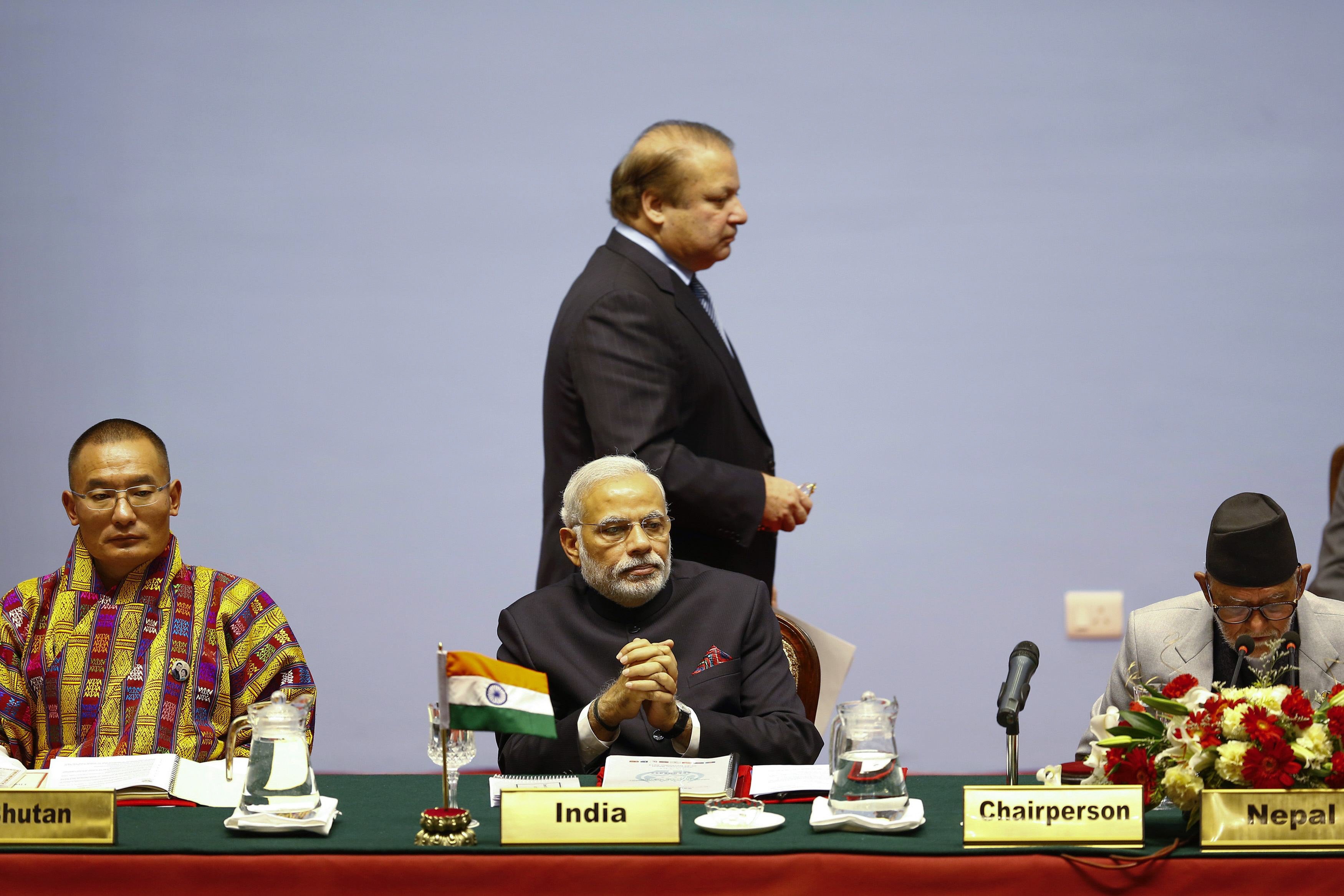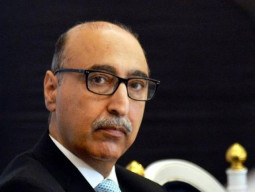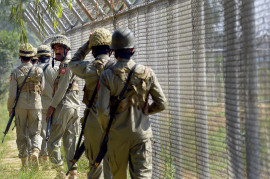
Narendra Modi’s current belligerent policy towards Pakistan is directed at isolating it internationally, pressuring it to give up support on Kashmir and simultaneously destabilising it through a network of spies. In the light of this ominous development, India’s emerging nuclear doctrine being promoted by its leading strategists is both a provocative signal and political challenge for Pakistan’s establishment.
What are the salient features of this doctrine? India is apparently abandoning its No First Use nuclear policy. This obviously is no revelation, as Pakistan’s establishment never based its nuclear strategy on this assumption. It always maintained that this “benign” nuclear posture was more for international consumption and less a reality. Moreover, it was also indicative of the confidence that India had in its conventional military superiority over Pakistan.
There was another Indian presumption that in the event of a terrorist attack emanating from Pakistan it could apply its Cold Start doctrine. Although its parameters were never clearly defined, it envisaged a mini-blitzkrieg tactical operation with special forces penetrating deep into Pakistani territory and destroying militant camps or their hideouts and retreating back to their base. When Pakistan developed its tactical nuclear weapons as an antidote to Cold Start, the doctrine went into cold storage and the new doctrine is taking shape. The broad features of it recently appeared in The New York Times in which the statements made by former National Security Adviser Shiv Shankar Menon, retired India’s Strategic Forces Commander, Gen BS Nagal and the former defence minister Manohar Parrikar during a seminar were quoted. The crux of this new thinking is that India is confident it can destroy in its first massive retaliatory strike Pakistan’s entire nuclear assets. According to Indian sources, Vipin Narang of MIT echoed previously similar views more than a year ago. What it implies that the Indian threat of a nuclear response has to be credible to be taken seriously by its adversary Pakistan. Additional point made during this seminar is that India is shifting to counter force targeting as opposed to the previous doctrine of counter value targeting.
These developments will further trigger an arms race as Pakistan will make certain that it holds sufficient stocks and spread them across a wide geographical area and several storage facilities. Of course that has its consequences requiring increased vigilance and ensuring compatibility with international standards of safety and security. Nonetheless, it will give Western countries and think tanks an additional reason to keep lop-sided pressure on Pakistan to reduce production of fissile material and abandon tactical nuclear weapons. But one can safely assume there will not be a word of restraint for India.
In a world where double standards thrive it is not strange that while US advises restraint to Pakistan and gets closer as a strategic ally of India, it also continues to modernise and increase the technological sophistication of its own nuclear arsenal to outbid Russia.
India, it seems, is developing nuclear posture trying to convince Pakistan that it cannot use the nuclear threat to prevent it from retaliating in the event of a terrorist attack on its soil by Pakistani militant groups. Pakistan conversely, while rejecting No First Use, is preparing to ensure that it retains second strike capability under all circumstances.
The Nuclear Suppliers Group (NSG) in 2008 under US pressure exempted India from requirement for application of comprehensive safeguards to access civil nuclear technologies. What’s striking is that it imposed no constraints on its nuclear programme. This removed all barriers and restrictions that strictly apply to nuclear trade while dealing with non-NPT members. This obviously was a huge setback to the non-proliferation regime. The same exemption continues to be denied to Pakistan on the basis of its previous non-proliferation record. Although the AQ Khan affair is now history and Pakistan is fully complying with international standards of nuclear safety and security. General Musharraf’s adventurism in Kargil is another frequently quoted episode to maintain the status quo.
In a recent seminar organised by the Strategic Vision Institute Pakistan’s former ambassador to the UN in Geneva Zamir Akram stated: “We are not talking of parity with India we are looking for proportionality, we are looking for a survivable second strike capability”. Pakistan has been fully aware of India’s designs and taking every possible measure to ensure the survivability of its nuclear assets and effectiveness of its second strike capability. Indian policy-makers should realise that the very concept of expecting to wipe out Pakistan’s entire nuclear assets would not only be unrealistic but highly dangerous with catastrophic consequences for the region. India’s new thinking reflects its growing reliance on nuclear weapons in strategic planning. It augurs a dangerous trend that reflects its desperation in dealing with Pakistan that requires political and diplomatic solutions and cannot be resolved through nuclear bulldozing.
Moreover, India has also taken the cover of strategic rivalry with China for expanding its nuclear arsenal. This posture has served it well for gaining support of Washington and its Western allies.
Irrespective of the doctrine adopted by India it is clear that deteriorating relations between the nuclear-armed neighbors on issues of Kashmir and terrorism increase the risk of conflict and raises the possibility of deterrence failure. The irony is that whereas India and Pakistan modernise and beef up their nuclear inventories it further freezes the issue of Kashmir and prevents them from addressing terrorism.
In this scenario, it would be unrealistic to expect that India or Pakistan would be amenable to slowing down fissile production or reduction in their arsenals or even contemplating placing any form of restriction on the development of delivery systems. The security establishments in India and Pakistan consider the nuclearisation of their countries the greatest achievement for guaranteeing the integrity and security of their respective countries. It has become the symbol of power and prestige. To reverse it in scale and its scope would require a complete shift in security and policy paradigm, which appears nowhere in sight.
Published in The Express Tribune, April 26th, 2017.
Like Opinion & Editorial on Facebook, follow @ETOpEd on Twitter to receive all updates on all our daily pieces.





















































COMMENTS (2)
Comments are moderated and generally will be posted if they are on-topic and not abusive.
For more information, please see our Comments FAQ